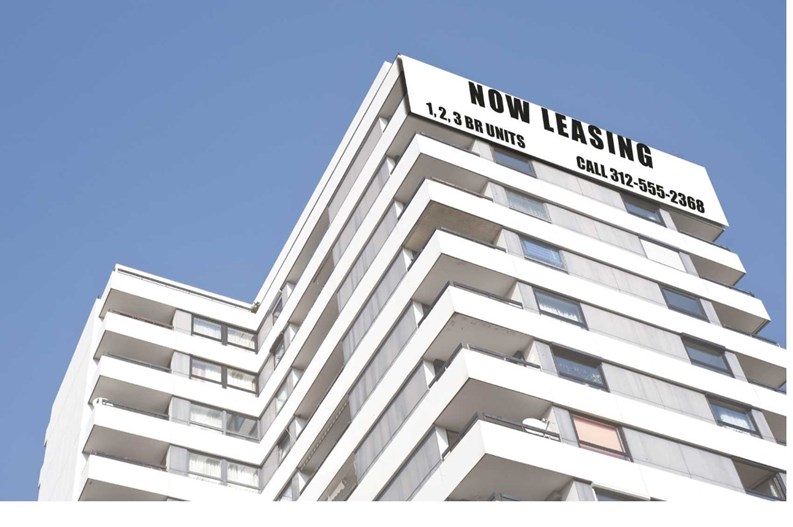As the housing market in many parts of the country has floundered, many developers have taken creative approaches to stanch the outward flow of cash. In many markets, this means opting to convert portions of developments originally intended as condo units into rental properties.
When a condo with no units sold converts to rental, it's not such a big deal, but when there are fully-vested owners who have purchased their units living side-by-side with rental tenants— or when unit owners rent out their apartments as income properties—the situation can become more complicated. Rental tenants simply do not have the same level of investment in the property as owners do, and this can be a source of friction between building residents, as well as board members and managers.
This results in an increasing number of renters in many Chicagoland markets—and it’s not without turmoil. Thankfully, there are legal mechanisms in place to protect current condo owners, developers and landlords to make sure the transition is done as smoothly as possible.
Foreclosure's Impact
In Chicago, there is no data tracking how many condos have been turned into rentals, but based on anecdotal evidence, the majority of unsold units from downtown condos within the last three years are being rented if they are not foreclosed, says Brian White, executive director of the Lakeside Community Development Corporation in Chicago.
“Chicago has an untold number of units in a shadow inventory, which includes units intended for sale but held off the market as rentals, yet-to-be-finished units, or foreclosed and vacant,” White says.
And since developers can get the biggest bang for their buck if they are financially able to rent until the market turns around, that’s what they all try to do.
Ducks in a Row
Before turning the condos into rentals, however, associations must take some legal steps. They have to pass new amendments allowing for renters, which require calling special meetings and getting the requisite vote of the unit owners. The vote required depends on the individual documents, ranging from a majority of all unit owners to a super majority, which is two-thirds or 75 percent, according to community association lawyer Gary Poliakoff.
Legal issues may also arise if the building has rental caps or establishes rental caps, which can prevent further rentals—or which may force the owners to sell off their units or move into them within a certain time period.
If the condo has already been purchased, the owner can rent out his or her unit but as owners they are still a member of the association and responsible for paying assessments—as long as renting out the unit is permitted per the governing documents, White says.
Legal issues may arise if the building has rental caps or establishes rental caps, which can prevent further rentals—or which may force the owners to sell off their units or move into them within a certain time period.
“That has happened, and in some cases, unit owners have sued,” White says. “The law seems pretty clear that the board has the right to establish rental restrictions, so unless the board is found to have violated a procedural question, they are likely to prevail.”
While legally, it may not be such a big issue for a developer or owner to decide to rent, there are other aspects to consider.
If the developer had intended the building to be comprised of luxury condos—and added super high-end amenities and fixtures, the developer may want the rentals to be marketed as super-luxe rentals rather than temporarily installing more down-market appliances in the units for the renters.
First, the developer or the owner has to consider the cost of getting rid of—and storing—the high-end appliances until the real estate market turns around. There’s also the additional cost of buying lower-end fixtures, says Angela Falzone, a consultant with Association Advocates, Inc., a property management consulting firm in Chicago.
Paid in Full
Once the fixtures are taken care of and the units are rented, the association or the developer has to make sure that they actually receive the rental payments. Depending on how the rental units and the legal documents are set up, the rental tenants can pay their rent to the association, to the developer or to a third party, White says.
But typically, it’s paid to whomever owners the unit. An association would only receive rent through the board or the board’s agent if the owner directed it to be paid that way—which is highly unlikely—or if the association gained possession by legal action and received a court order allowing them to collect rent to settle unpaid assessments.
“Illinois is the only state to my knowledge that allows an association to sue and take possession,” White says. “Usually, the association will evict the existing tenants when they take over, but more and more, they are simply making separate arrangement with the current tenants to collect the rent. If the unit is vacant and they have taken possession from a developer or absentee owner, they will arrange for a tenant, often through a leasing company.”
Getting Along
Once the rent is arranged, the renters have to make sure they’re being treated just as fairly as the owners. In Chicago, renters enjoy renter’s rights under the Chicago Residential Landlord Tenant Ordinance. They have rights as occupants and residents, such as those extended by the rules and regulations, and other legal documents, White says. But they don’t enjoy any of the rights of ownership except those that are granted to them by their leases. So they don’t vote, although they are allowed to attend board meetings. It makes no difference whether the building is sold partially or not.
The renters also have the same rights as owners to use laundry rooms as long as it’s established by the building’s governing documents and lease arrangements between a unit owner and his tenants, says Gael Mennecke, executive director of the Association of Condominium, Townhouse and Homeowners Associations (ACTHA) in Chicago.
“The lease is subordinate to the governing documents, and may be more restrictive, based on the owner’s preferences,” Mennecke says.
Another big issue is the renters themselves, and the tension between renters and other owners in the building.
“Tenants may have a different respect for the property than an owner,” Falzone says. “They may have the transient mentality and not think the rules apply to them. It would be the manager’s job to treat violations as with any other resident. Owners should be notified as well as tenants of any rule infractions.”
The rule infractions that tend to occur with renters are loud parties, damage to common areas and being rude or inconsiderate, she says.
Out With the Bad
If a building has a bad rental tenant, the board and management have a few different options.
The unit owner is responsible for his or her tenant, and the rules should be enforced through the unit owner, White says. But if that fails, the association would likely move to evict the unit owner by taking possession for non-compliance with rules, or they might move to restrict the unit owner from renting in the future.
“The unit owner is bound to uphold the lease, however, so it can be tricky,” White says. “In worst case scenarios, the association can turn to the police, but the tenant will continue to have the right to the unit so long as they have a lease. This is why we encourage associations to require unit owners who rent to attend and receive proof of completion for qualified landlord training. It is also why we encourage associations to involve tenants in the community—tenants will behave better where they are socially-connected.”
The final concern is whether rental tenants in your building affects the building’s profile with lenders or prospective buyers.
Having 30 percent or more renters can create challenges for buyers seeking financing. Lenders may still approve of the financing depending on the building’s rationale for having many renters, but it depends on the totality of the association’s management strategy combined with the building’s finances, White says.
The rule of thumb used to be that no more than 25 percent of the tenants should be renters, Falzone says, but now, the Federal Housing Administration allows 50 percent—and that is always subject to change.
If problems arise, there are multiple resources available to buildings with shareholders and owners and rental tenants living side-by-side. For example, Lakeside Community Development Corporation offers seminars and training combining rental and landlord services, homeowner services and condo board training.
In addition to understanding all the legalities and formalities surrounding the renting of condos, it’s very important that the unit owners and the developers do a thorough interview with the perspective renters. That interview should include a full understanding of their finances—current and past.
If everyone is on the same page regarding their rights, the needs and the opportunities that renters could bring to a building—even if they’re temporary—it’s possible for everyone to live respectfully and in harmony. But the building and its tenants need to be prepared for every situation—good or bad.
Danielle Braff is a freelance writer and a frequent contributor to The Chicagoland Cooperator.







Leave a Comment